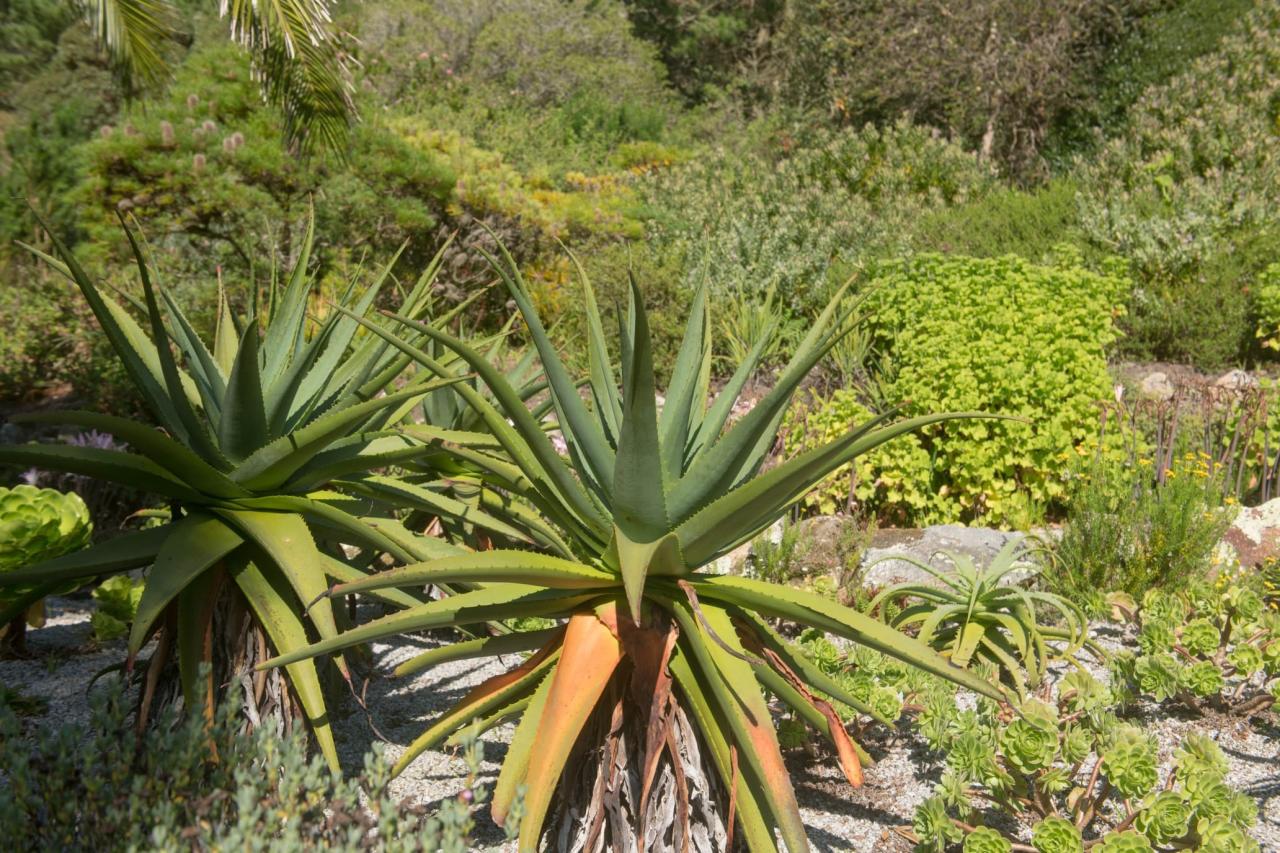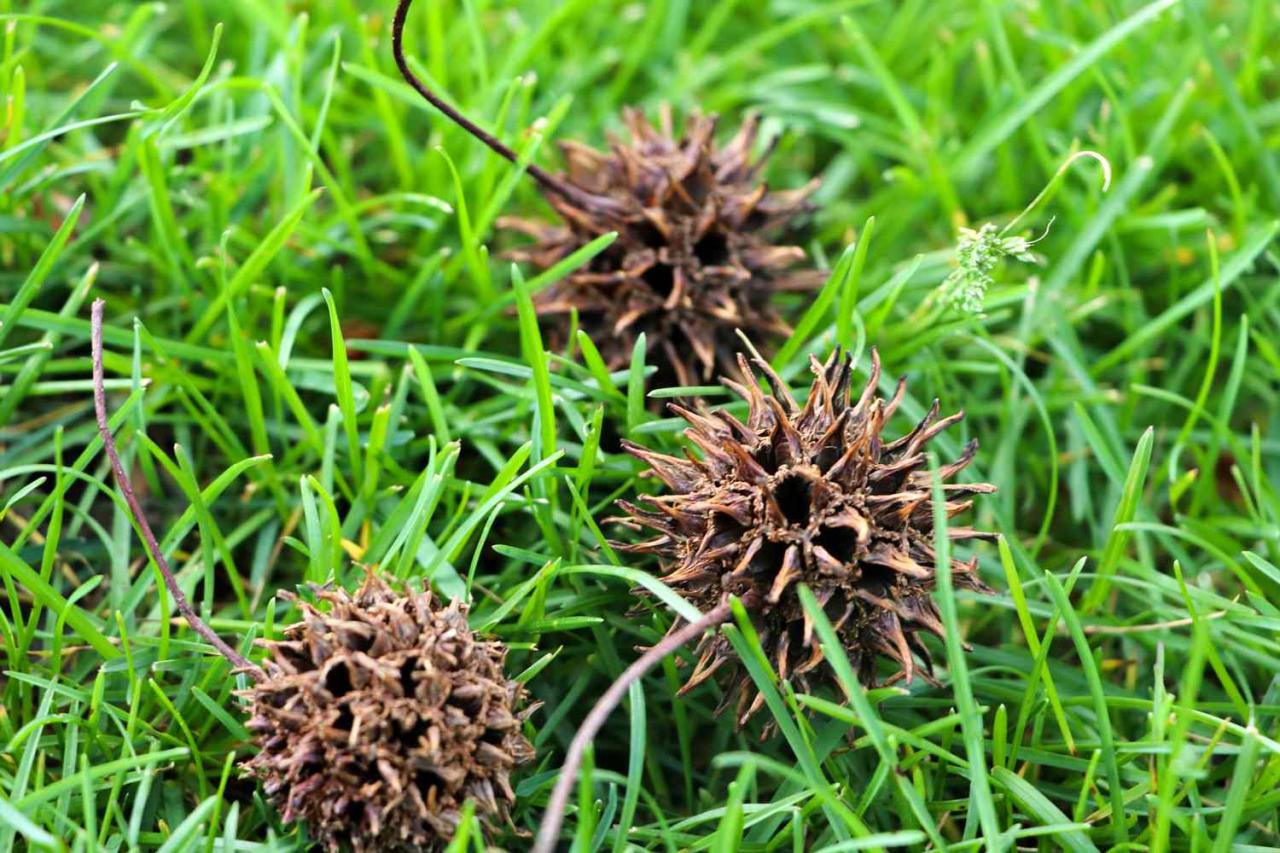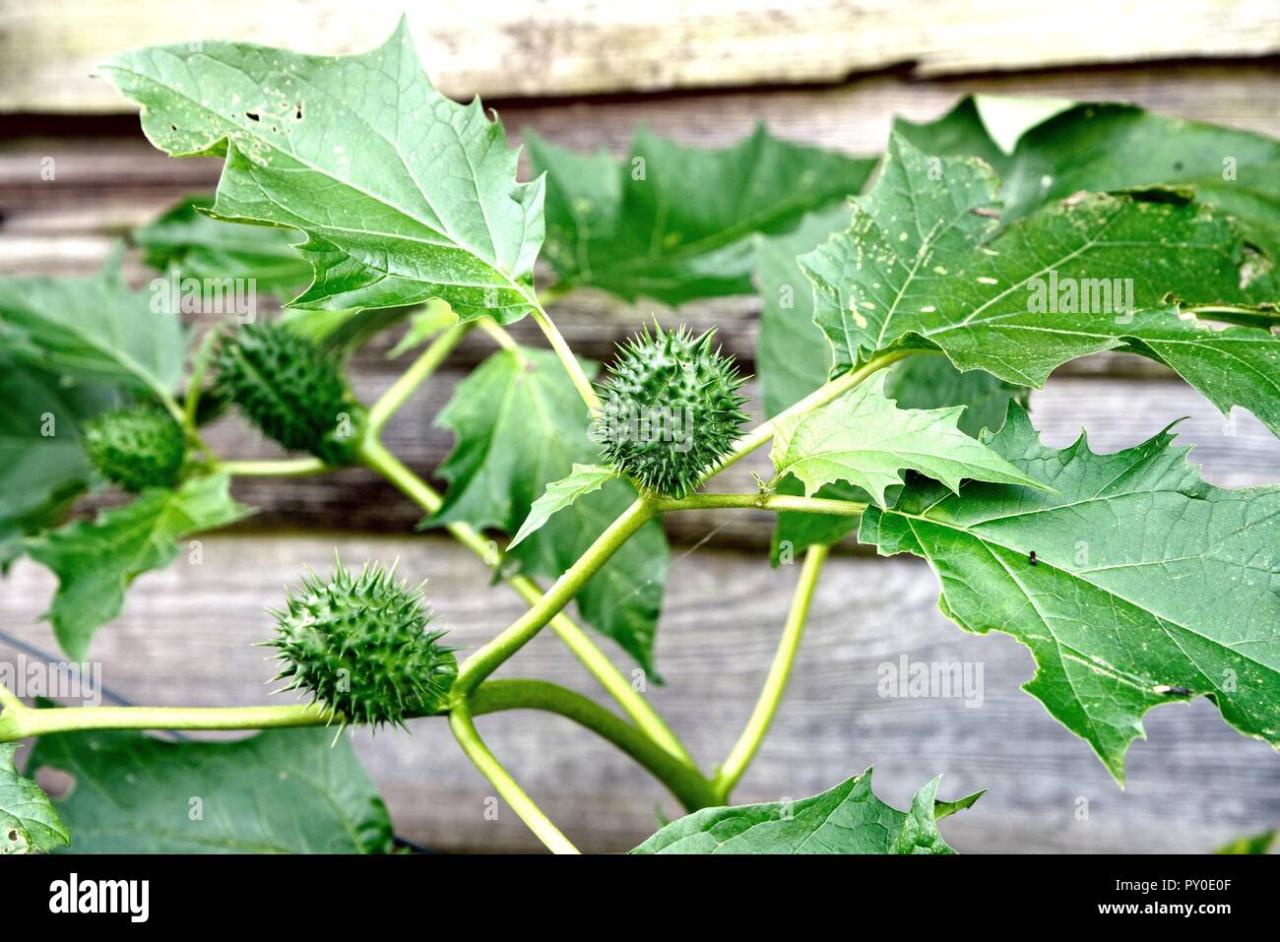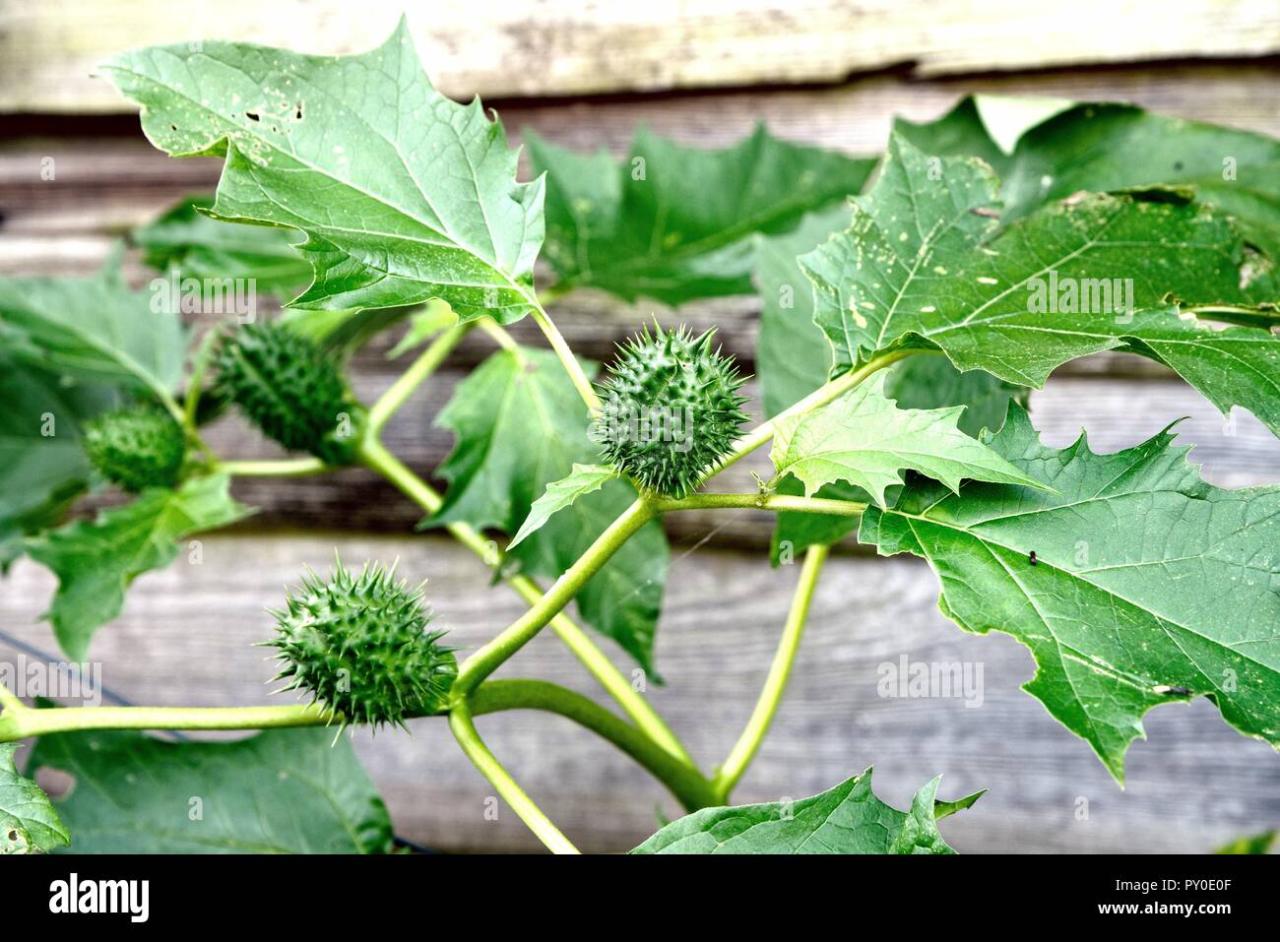The Ultimate Guide to Growing Plants from Spiky Seeds unlocks the secrets to successfully cultivating these often-challenging botanical wonders. While their spiky exteriors may seem daunting, these seeds hold the potential for vibrant blooms, delicious fruits, and captivating foliage. Join us as we delve into the intricacies of selecting, preparing, and nurturing these unique seeds, transforming your garden into a haven of spiky-seed-derived marvels.
From understanding the characteristics of spiky seeds and their potential benefits to mastering the art of scarification, sowing, and transplanting, this guide equips you with the knowledge and techniques needed to cultivate a thriving garden filled with plants born from these unusual seeds.
Understanding Spiky Seeds

Spiky seeds are a fascinating and often challenging aspect of the plant world. These seeds, characterized by their prickly or barbed outer coverings, have evolved to aid in dispersal and survival. While their spiky nature provides advantages for seed dissemination, it also presents unique hurdles for gardeners and plant enthusiasts aiming to cultivate them.
Characteristics of Spiky Seeds
The spiky nature of these seeds serves a crucial purpose in their life cycle. The barbs or prickles, often composed of tough, fibrous material, facilitate attachment to animals or objects, aiding in seed dispersal over greater distances. This mechanism ensures that seeds are spread away from the parent plant, reducing competition for resources and promoting genetic diversity.
However, this adaptation also poses challenges for humans attempting to grow plants from spiky seeds.
Examples of Plants with Spiky Seeds
Numerous plants produce spiky seeds, contributing to their diverse ecological roles. Some common examples include:
- Burdock (Arctium lappa): This plant’s spiky seeds, known as burrs, are renowned for their ability to attach to clothing and animal fur, effectively dispersing them.
- Cocklebur (Xanthium strumarium): Similar to burdock, cocklebur seeds possess sharp barbs that readily attach to passing animals, aiding in their dispersal.
- Sandbur (Cenchrus longispinus): This grass produces spiky seeds with sharp, barbed bristles that can penetrate skin and cause discomfort. These barbs help the seeds cling to animals and spread to new locations.
Benefits and Drawbacks of Growing Plants from Spiky Seeds
While the spiky nature of these seeds can pose challenges for cultivation, it also presents potential benefits.
Benefits
- Enhanced Seed Dispersal:The spiky nature of these seeds contributes to their efficient dispersal, ensuring the plant’s survival and propagation.
- Increased Germination Success:In some cases, the spiky outer covering can protect the seed from predation or harsh environmental conditions, improving its chances of germination.
Drawbacks
- Difficult Handling:The spiky nature of these seeds can make them difficult to handle, potentially causing discomfort or injury during planting and sowing.
- Limited Seed Viability:The spiky outer covering can sometimes hinder seed germination, as it may prevent water and oxygen from reaching the embryo.
Preparing for Planting
Preparing for planting spiky seeds requires a combination of understanding the specific needs of your chosen species and applying appropriate techniques to enhance germination success. This section will guide you through selecting the right seeds, ensuring proper storage and handling, and implementing effective scarification methods.
Selecting the Right Spiky Seeds
Choosing the right spiky seeds for your garden is crucial for successful planting. This involves considering factors such as the seed’s suitability for your climate, the space available in your garden, and your personal preferences.
- Climate Compatibility:Spiky seeds come from diverse plant families and regions, each with specific temperature and humidity requirements. Research the optimal growing conditions for your chosen seed variety to ensure its survival and flourishing in your garden. For example, seeds from arid regions might struggle in humid climates, while those adapted to cooler temperatures may not thrive in tropical environments.
- Space Availability:Consider the mature size of the plant that will grow from the seed. Ensure that your garden has sufficient space to accommodate the plant’s growth without overcrowding or hindering other plants. Some spiky-seeded plants, like cacti, can grow quite large, while others, such as some succulents, remain relatively compact.
- Personal Preferences:Choose seeds that appeal to your gardening style and preferences. Do you prefer vibrant flowers, lush foliage, or unique textures? Selecting seeds based on your preferences will make the gardening process more enjoyable and rewarding.
Storing Spiky Seeds, The Ultimate Guide to Growing Plants from Spiky Seeds
Proper storage is essential to maintain the viability and germination potential of spiky seeds.
- Cool and Dry Conditions:Spiky seeds should be stored in a cool, dry, and dark environment. Ideal storage temperatures range from 32°F to 41°F (0°C to 5°C). This helps to slow down metabolic processes and prevent seed deterioration.
- Airtight Containers:Store seeds in airtight containers to prevent moisture absorption and infestation by pests. Glass jars or sealed plastic bags are suitable options. Avoid using plastic bags with zippers, as they can leak over time.
- Labeling:Label each container with the seed type, date of harvest, and any specific storage instructions. This helps in identifying and managing your seed collection effectively.
Scarifying Spiky Seeds
Spiky seeds often have a hard outer coat that prevents water and oxygen from reaching the embryo, hindering germination. Scarification is a technique used to weaken or remove this hard coat, promoting germination.
- Mechanical Scarification:This method involves physically abrading the seed coat using tools like sandpaper, a file, or a sharp knife. Gently rub the seed against the abrasive surface until you see a small scratch or nick on the seed coat. Avoid excessive force to prevent damaging the embryo.
While “The Ultimate Guide to Growing Plants from Spiky Seeds” covers a wide range of challenging seeds, the delicate African Violet might seem like an unlikely candidate. However, with the right techniques, you can propagate these beauties quickly and efficiently.
Learn how to fast-track African Violet propagation in less time with this comprehensive guide, Fast-Track African Violet Propagation: Grow More in Less Time , and apply those principles to other spiky seeds for successful growth.
- Hot Water Treatment:Soak the seeds in hot water (180°F to 200°F) for a few minutes. This softens the seed coat and facilitates germination. Be cautious not to scald the seeds.
- Acid Treatment:Some spiky seeds benefit from acid treatment. Soak the seeds in a dilute solution of sulfuric acid (10% to 20%) for a short period. This method is typically used for seeds with extremely hard coats, such as those from certain palm species.
Always wear protective gear and follow safety guidelines when handling acids.
Sowing and Germination: The Ultimate Guide To Growing Plants From Spiky Seeds

After preparing your spiky seeds and the planting medium, the next step is sowing and germination. This crucial stage requires careful attention to ensure successful plant development.
Sowing Spiky Seeds
Sowing spiky seeds involves carefully placing them in the prepared soil, ensuring proper depth and spacing for optimal germination. The process involves selecting the right planting medium, understanding the ideal depth for each seed type, and ensuring proper spacing between seeds.
- Select the right planting medium:Spiky seeds require a well-draining soil mix that allows for adequate aeration and moisture retention. A combination of potting soil, perlite, and vermiculite is often recommended.
- Determine the optimal depth for each seed type:Spiky seeds, depending on their size and species, require varying depths for germination. Generally, the rule of thumb is to sow the seeds at a depth twice the size of the seed. For instance, if the seed is 1/4 inch in diameter, it should be sown at a depth of 1/2 inch.
- Ensure proper spacing between seeds:Spacing is essential for providing adequate room for seedlings to develop and grow. The required spacing varies based on the mature size of the plant. For smaller plants, a spacing of 2-4 inches might be sufficient, while larger plants may require 6-12 inches or more.
Providing Adequate Moisture and Light for Germination
Water plays a crucial role in the germination process, while light is essential for the growth of seedlings after germination. Understanding the specific needs of spiky seeds regarding moisture and light is essential for successful germination.
- Maintaining consistent moisture:Spiky seeds require consistent moisture for germination. The soil should be kept moist but not waterlogged. Overwatering can lead to root rot, while under-watering can hinder germination.
- Providing adequate light:Most spiky seeds require light for germination. However, the amount of light needed varies depending on the species. Some seeds may require direct sunlight, while others prefer indirect light.
Creating a Suitable Environment for Seed Germination
Creating an optimal environment for seed germination involves maintaining the right temperature, humidity, and light conditions. Utilizing seed trays or greenhouses can significantly enhance the success rate of germination.
- Using seed trays:Seed trays provide a controlled environment for germination. They allow for proper drainage, ventilation, and moisture retention. Seed trays are typically made of plastic or biodegradable materials and come in various sizes and configurations.
- Utilizing greenhouses:Greenhouses offer a controlled environment for seed germination, providing optimal temperature, humidity, and light conditions. Greenhouses can be made of glass, plastic, or other materials and come in various sizes and designs.
Transplanting and Care
Transplanting spiky-seeded plants is a crucial step in their growth journey, requiring careful handling and attention to ensure their successful establishment in their permanent locations. The timing and technique of transplanting are critical factors in determining the survival and vigor of your plants.
This section will guide you through the process of transplanting spiky-seeded plants, covering optimal timing, best practices, and essential care techniques.
Optimal Transplanting Time
The ideal time to transplant spiky-seeded plants varies depending on the specific species and climate. Here is a table outlining the optimal transplanting time for common spiky-seeded plant varieties:
Plant Variety |
Optimal Transplanting Time |
|---|---|
Cactus |
Spring or early summer, after the last frost |
Agave |
Spring or early summer, after the last frost |
Yucca |
Spring or early summer, after the last frost |
Aloe |
Spring or early summer, after the last frost |
Pineapple |
Spring or early summer, after the last frost |
Succulents |
Spring or early summer, after the last frost |
Transplanting Techniques
Transplanting spiky-seeded plants requires a gentle touch to avoid damaging their delicate roots. Follow these steps for successful transplanting:
- Choose a suitable location:Select a location that provides adequate sunlight, drainage, and soil conditions for the specific plant variety. Consider the mature size of the plant to ensure sufficient space for its growth.
- Prepare the planting hole:Dig a hole twice as wide and deep as the root ball of the seedling. Amend the soil with compost or other organic matter to improve drainage and nutrient content.
- Gently remove the seedling:Carefully remove the seedling from its container, taking care not to disturb the root ball. If the roots are circling around the container, gently loosen them to encourage outward growth.
- Place the seedling in the hole:Position the seedling in the planting hole so that the top of the root ball is level with the surrounding soil. Ensure that the seedling is upright and stable.
- Backfill the hole:Gradually backfill the hole with soil, pressing gently around the root ball to eliminate air pockets. Leave a slight depression around the base of the plant to facilitate watering.
- Water thoroughly:Water the newly transplanted plant deeply to settle the soil and promote root growth.
Watering
Consistent watering is essential for the establishment and growth of spiky-seeded plants. Here’s a guide to proper watering techniques:
- Water deeply and infrequently:Spiky-seeded plants prefer deep watering less frequently, allowing the soil to dry out slightly between waterings. This encourages deep root development and prevents root rot.
- Avoid overwatering:Overwatering can lead to root rot and other fungal diseases. Monitor the soil moisture levels and water only when the top inch of soil feels dry to the touch.
- Water in the morning:Watering in the morning allows the soil to dry out during the day, reducing the risk of fungal diseases. Also, the leaves have time to dry off, minimizing the risk of fungal infections.
Fertilizing
Spiky-seeded plants typically have low nutrient requirements. However, occasional fertilization can promote healthy growth and flowering.
The Ultimate Guide to Growing Plants from Spiky Seeds provides comprehensive instructions for nurturing a variety of plants from seed. This guide covers everything from preparing the soil to managing pests, ensuring a successful growing experience. For those seeking alternative propagation methods, consider the technique of propagating African violets using plastic bags, as outlined in How to Propagate African Violets Using Plastic Bags.
This method offers a simple and effective way to multiply your African violet collection. With the knowledge gained from both resources, you’ll be well-equipped to cultivate a flourishing garden.
- Use a balanced fertilizer:A balanced fertilizer with an NPK ratio of 10-10-10 is suitable for most spiky-seeded plants. Avoid fertilizers high in nitrogen, as this can encourage excessive foliage growth at the expense of flowering.
- Fertilize sparingly:Fertilize only during the active growing season, typically in spring and summer. Overfertilization can lead to nutrient imbalances and damage the plant.
- Follow label instructions:Always follow the manufacturer’s instructions for fertilizer application rates and frequency. Excessive fertilization can be harmful to plants.
Pest and Disease Control
Spiky-seeded plants are generally resistant to pests and diseases. However, certain pests and diseases can still affect their growth.
- Monitor for pests:Regularly inspect your plants for signs of pests such as aphids, mealybugs, and scale insects. Remove any pests manually or use a mild insecticidal soap to control them.
- Prevent fungal diseases:Avoid overwatering and ensure good drainage to prevent fungal diseases. If fungal diseases occur, remove infected leaves or stems and apply a fungicide as needed.
- Promote healthy growth:Healthy plants are better equipped to resist pests and diseases. Provide adequate sunlight, water, and nutrients to encourage strong growth.
Common Challenges and Solutions

Growing plants from spiky seeds can be rewarding, but it also comes with its own set of challenges. Understanding these challenges and implementing appropriate solutions can significantly improve your success rate and ensure healthy plant growth.
Slow Germination
Slow germination is a common issue encountered when growing plants from spiky seeds. Several factors can contribute to this, including seed quality, environmental conditions, and the seed’s own protective mechanisms.
- Seed Quality: Seeds that are old, damaged, or stored improperly may have reduced viability, leading to slow or no germination.
- Environmental Conditions: Temperature, moisture, and light play crucial roles in seed germination. If the environment is not suitable for the specific plant species, germination can be delayed or hindered.
- Seed Coat Protection: Spiky seeds often have tough outer coats that protect the embryo but can also slow down germination. These coats need to be weakened or softened before the seed can sprout.
Troubleshooting Slow Germination
- Seed Scarification: This technique involves physically damaging the seed coat to promote germination. Methods include nicking the seed coat with a sharp knife, using sandpaper, or soaking the seeds in hot water.
- Stratification: Some spiky seeds require a period of cold stratification to break dormancy and trigger germination. This involves exposing the seeds to cold temperatures for a specific duration.
- Optimal Germination Conditions: Ensure the seeds are sown in a warm, moist environment with adequate light. Consult seed packets or online resources for specific temperature and light requirements.
Fungal Infections
Fungal infections can be a significant threat to seedlings, especially in humid environments. Fungi thrive in damp conditions and can attack young plants, causing root rot, damping off, and other diseases.
Preventing and Treating Fungal Infections
- Sterile Seed Starting Mix: Use a sterilized seed starting mix to minimize the risk of fungal spores.
- Proper Watering: Avoid overwatering, as excessive moisture creates a favorable environment for fungal growth. Allow the soil to dry slightly between waterings.
- Ventilation: Ensure good ventilation in your growing area to reduce humidity levels.
- Fungicides: In case of fungal infections, use a fungicide specifically formulated for seedlings. Follow the product instructions carefully.
Pest Infestations
Pests such as aphids, whiteflies, and slugs can damage seedlings and hinder growth. These pests can feed on young plants, causing wilting, discoloration, and stunted growth.
Preventing and Controlling Pest Infestations
- Inspect Regularly: Regularly inspect seedlings for signs of pests. Early detection is crucial for effective control.
- Natural Predators: Introduce beneficial insects like ladybugs or lacewings to your garden to help control pest populations.
- Pesticide Sprays: Use insecticidal soap or neem oil sprays to control pests. Always follow the product instructions and safety precautions.
Harvesting and Enjoyment
After the hard work of cultivating your spiky-seed plants, the time has come to reap the rewards. Harvesting the seeds from your plants is a crucial step in the process, ensuring you can enjoy the fruits of your labor and even propagate more plants in the future.
Harvesting Spiky Seeds
The optimal time for harvesting spiky seeds varies depending on the specific plant species.
- For most spiky-seed plants, the best time to harvest is when the seed pods have turned brown and dry, indicating that the seeds are fully mature.
- However, some plants, like sunflowers, may require harvesting when the seed heads are still green but have begun to droop, ensuring the seeds are plump and full of nutrients.
- Always refer to specific plant guides or consult with experienced gardeners for the best harvesting time for your particular spiky-seed varieties.
Methods for Harvesting Spiky Seeds
- Hand Harvesting:For smaller plants, hand harvesting is the most common method. Gently twist or snap off the seed pods, ensuring they are dry and fully mature.
- Cutting the Stem:For larger plants like sunflowers, cut the stem below the seed head. Allow the seed head to dry in a cool, dry place, then remove the seeds once they have fully matured.
- Using a Sieve:After harvesting, use a sieve to separate the seeds from any debris or chaff. This helps ensure clean and viable seeds for storage and future planting.
Preparing Spiky Seeds for Storage
Once harvested, it is crucial to properly prepare the seeds for storage to ensure their viability and longevity.
- Cleaning:Thoroughly clean the seeds by removing any remaining chaff or debris. This can be done by gently rubbing the seeds between your hands or using a small brush.
- Drying:Spread the cleaned seeds on a paper towel or mesh screen in a well-ventilated area to dry completely. This prevents mold and mildew from forming.
- Storing:Store the dried seeds in airtight containers in a cool, dark, and dry place. Label the containers with the plant species and the date of harvesting for future reference.
Enjoying the Fruits of Your Labor
Spiky seeds offer a variety of culinary, medicinal, and decorative uses.
- Culinary Uses:Many spiky seeds are edible and can be enjoyed in various dishes. Sunflower seeds are popular snacks, while poppy seeds add a nutty flavor to baked goods and salads. Chia seeds are a nutritional powerhouse, used in smoothies, puddings, and even as a thickener for soups and sauces.
- Medicinal Uses:Some spiky seeds have medicinal properties. Flaxseeds are known for their anti-inflammatory and heart-healthy benefits, while chia seeds are rich in antioxidants and fiber. Consult with a healthcare professional before using spiky seeds for medicinal purposes.
- Decorative Uses:Spiky seeds can add a unique touch to your home décor. Seed pods can be used in dried flower arrangements, while the seeds themselves can be incorporated into crafts and jewelry.
End of Discussion
Embark on a rewarding journey with our ultimate guide, unlocking the secrets to successfully growing plants from spiky seeds. From the initial selection and preparation to the final harvest and enjoyment, we’ve provided you with the knowledge and techniques to cultivate these unique botanical wonders.
Embrace the challenge, and let your garden flourish with the beauty and diversity that spiky seeds offer.
Answers to Common Questions
What are some common examples of plants with spiky seeds?
Common plants with spiky seeds include sunflowers, poppies, and many types of cacti.
Are spiky seeds always difficult to grow?
While spiky seeds can be challenging, many species germinate readily with proper preparation and care. Understanding the specific needs of each seed variety is key.
What are the benefits of growing plants from spiky seeds?
Growing plants from spiky seeds allows you to enjoy the unique characteristics of these plants, often producing vibrant flowers, delicious fruits, or striking foliage.
